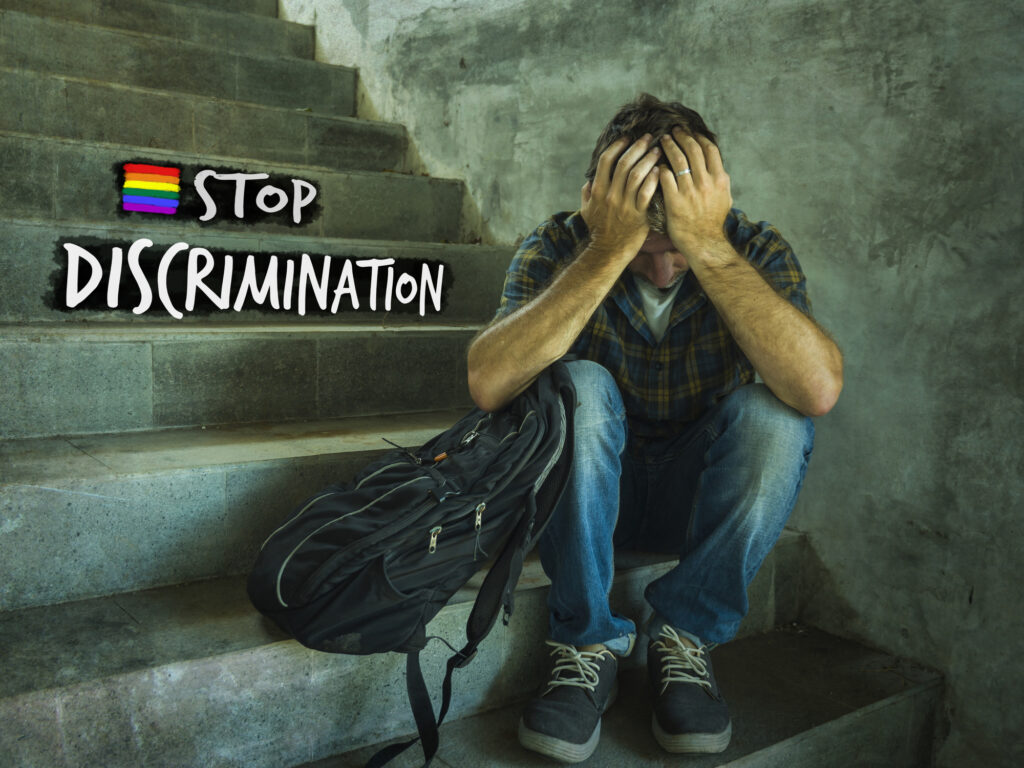A recent article, published in the Analyses of Social Issues and Public Policy, examined the relations among school district political attitudes, bullying experiences, and mental health outcomes among lesbian, gay, bisexual, transgender, and queer (LGBTQ+) student. The results showed that LGBTQ+ students in more conservative-leaning districts reported more bullying experiences, increased psychological distress and less teacher intervention.
“Recent studies have explored how LGBTQ+ inclusive policy and environments in public school settings relate to academic success and positive health outcomes for LGBTQ youth,” the lead investigator Dr. Steven Hobaica from the Department of Psychology at Washington State University, notes.
“A gap exists in the literature, as the political attitudes of a public-school district may influence LGBTQ+ students’ experiences in schools, as well as services, policies, and inclusion efforts.”
 October is National Bullying Prevention Month. According to a recent government survey, about 20% of students age 12 to 18 experienced bullying across the United States. The Centers for Disease Control and Department of Education define bullying with three core elements: unwanted aggressive behaviors observed or perceived power imbalances, and repetition or high likelihood of repetition of bullying behaviors.
October is National Bullying Prevention Month. According to a recent government survey, about 20% of students age 12 to 18 experienced bullying across the United States. The Centers for Disease Control and Department of Education define bullying with three core elements: unwanted aggressive behaviors observed or perceived power imbalances, and repetition or high likelihood of repetition of bullying behaviors.
Students who experience bullying are more likely to have low self-esteem, poorer school performance, increased social isolation, and a higher risk for mental health concerns such as depression, anxiety, and suicidal thoughts.
LGBTQ+ youths are at higher risk for mental health concerns and suicide than their heterosexual or cisgender peers due to minority stress. Research has shown that community- and policy-level supports are beneficial for LGBTQ+ youths in decreasing the behavioral and mental health issues and the rate of suicide.
“The lack of pro-LGBTQ+ policy is a life-threatening public health crisis,” the lead investigator points out. “Federal policy dictating more inclusive and affirming environments for LGBTQ+ youths, as well as having more explicit anti-bullying policies, could have significant implication for LGBTQ+ youth health.”
The article also draws attention to the impact of political climate by using research data following the 2016 presidential election. Studies have shown that there have been increased levels of general bullying and bullying related to students’ immigrant and ethnic backgrounds. In addition, during the Trump administration, LGBTQ+ individuals were more likely to experience prejudice and discrimination.
“With the knowledge that political conservatism is associated with less accepting attitudes of LGBTQ+ people and less support for health-promoting LGBTQ+ policy, LGBTQ+ people who live in school districts with more liberal attitudes may benefit from policies and school environments that attempt to be inclusive of all students.”
The research consisted of data from 49,55 public students in Washington state, aged 13 to 19 years, old across 227 school districts. In total, 20% of the students identified as a member of the LGBTQ+ community. They were asked to report their experiences of bullying, psychological distress, receipt of teacher/staff intervention for bullying, in addition to their demographic information.
The research also obtained WA school district voting records for the 2016 presidential election. As a result, the study was first able to confirm our current understanding of relationships between bullying, LGBTQ+ identity, psychological distress, and voting for Trump.
“Bullying was positively correlated with psychological distress. LGBTQ+ identity was positively correlated with bullying and psychological distress. Voting for Trump was negatively correlated with LGBTQ+ identity (suggesting LGBTQ+ individuals are less likely to disclose their identities) and positively correlated with bullying and psychological distress.”
In addition, LGBTQ+ students reported significantly more bullying and more psychological distress than non-LGBTQ+ students. The experience of bullying also helped explain the relation between LGBTQ+ identity and psychological distress, meaning the LGBTQ+ students who experience greater bullying reported greater psychological distress.
As for teacher interventions, LGBTQ+ students reported fewer bullying experiences when there were more teacher interventions. There was significantly less teacher intervention in conservative-leaning districts than liberal-leaning districts.
“LGBTQ+ students in conservative-leaning districts experienced a larger negative effect of a lack of teacher intervention on bullying in comparison to students in more liberal-leaning districts, which was associated with more psychological distress.”
“Explicit and inclusive anti-bullying legislation must circumvent the risks to LGBTQ+ youth regardless of school district political attitudes.”
The authors recommend that systemic interventions be proactively developed to remove the burden of inclusive norm development from students and teachers. The state should expand the model policy to be more comprehensive and inclusive of LGBTQ+ identities.
They recommend that each school appoint a person responsible for enforcing the Harassment, Intimidation & Bullying (HIB) policy. The schools should also include explicit parameters for the training and education of teachers regarding LGBTQ bullying and intervention plans. The creation of safe spaces for LGBTQ students should also be considered.
The authors conclude:
“Our finding suggests that LGBTQ+ students are at higher risk for psychological distress and suicidality through their greater risk for bullying, particularly in school districts with more conservative voting records… When intervention does not occur, LGBTQ+ youth may experience more bullying and subsequently more psychological distress and suicidality.”
“Stakeholders, school administrators, and teachers must demonstrate a full commitment to protecting their students and prioritizing their well-being, regardless of school district political attitudes or the identities of their students.”
****
Hobaica, S., Kwon, P., Reiter, S. R., Aguilar‐Bonnette, A., Scott, W. D., Wessel, A., & Strand, P. S. (2021). Bullying in schools and LGBTQ+ youth mental health: Relations with voting for Trump. Analyses of Social Issues and Public Policy. (Link)















My best friends are a trans couple. My wife and I were the only ones who supported my gay cousin’s marriage. And yet, the religious fervor with which this topic is approached by the Left and Right makes any attempt at meaningful discussion on this topic moot.
This ‘study’ is riddled with assumptions and biases. And the entire ‘science’ of this subject is based more in a priori assumptions on the subject rather than actual testing of how any of us develop as human beings. I’m all for supporting the LGBTQ+ community as human beings. I do so without qualification. But on a website like this, where ‘science’ is supposedly the basis for discussions, this entire topic is fraught from both ends with assumptions and passions that make nuance and real science impossible.
I helped my wife rebuild her personality, block by block, part by part. Some were asexual. Some were gender ambivalent. I never imposed my beliefs upon any, but by loving and affirming each part and helping each to assimilate/integrate into a healthy whole, she has come to her own place without any shame and without all the distress and angst I see surrounding this issue from both sides.
It really is too bad that both sides from my perspective are exacerbating the problem, and neither is willing to listen and examine their own ignorance and assumptions. As a result, this problem is only getting worse for those whom it most affects: the LGTBQ+ members and their loved ones.
Sam
Report comment
Removed for moderation.
Report comment
This. It’s never actually been about the PEOPLE affected. It’s theocrats trying to impose their rule on others on one side, and on the other it’s Marxists who only see this(and every other social/cultural issue) as a lever to destabilize capitalist society. Neither side gives the slightest shit who they hurt as long as they get their way.
Report comment
This reminds me of a gentleman some friends of mine picked up while he was hitchhiking. He was a gay gent who happened to have a black belt in taekwando. When he was in a nasty mood, he’d go to a trashy bar in the heart of his hometown, where if he heard patrons badmouthing homosexuals, he’d flame on, and when the badmouthing patrons became irritated, he’d suddenly pay for his drink and leave, right after they’d ordered, which would give him time to get a head start on them.
When they came out, they’d see him dart down a nearby alley he’d previously scouted. If they followed, it meant they were actually headed for the local hospital’s emergency room as new patients, instead of heading for giving this queer the beating they thought he deserved.
Report comment
Removed for moderation.
Report comment